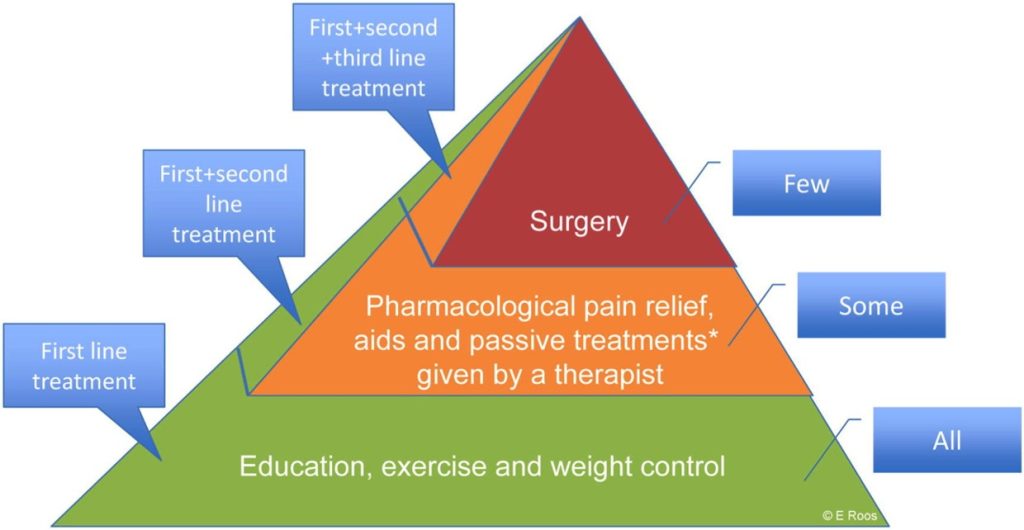Osteoarthritis is a degenerative condition where the protective cushion of the joints wear down and become inflamed over time. It is often met with swelling, pain, and decreased movement of the joint. The articular cartilage of our joints thins over time due to everyday use. There is often a vicious cycle where the pain stops you from exercising and moving, however, that is often the solution. Though the effects on the joints cannot be reversed, studies have shown good improvement in pain, function, and quality of life through progressive exercise.
Points of Discussion
Symptoms of Arthritis
There are many types of arthritis and its severity varies for each individual depending on their age. Some common symptoms are:
- Stiffness of the joints
- Swelling and inflammation
- Joint deformity (e.g. bone spurs)
- Reduced movement and pain
Arthritis doesn’t have a cure. Most people with this condition often turn to medication and topical creams to help relieve the pain. But for people who are looking for other ways of pain relief, physio for arthritis might be the answer.
Does Physio Help with Arthritis?
Think of it this way: joints are designed to move. The lack of movement causes our joints and muscles to weaken. Physiotherapy modifies activities and encourages exercise to allow pain-free movement. It targets the muscles and surrounding structures of the area to help support the joint due to lack of articular cartilage to create stability. Supervised exercise has shown to reduce pain by 36%, decreased reliance on pain medication and decreased perceived need for surgery.
The first thing a physiotherapist will do upon consultation is to assess your range of motion. They will perform a series of tests that will show them your flexibility and the strength of your joints. They will ask about your daily activities before and after you had arthritis and your pain relief ways. From this, they can give advice and education as well as a detailed home exercise program to manage your symptoms outside of the clinic.
Benefits of Physiotherapy for Arthritis
Some patients report a significant improvement after just one physiotherapy session. But for you to enjoy the benefits for a longer period of time, we recommend going for a series of sessions until you are confident in your specialised arthritis pain management routine. managing your symptoms on your own. Manual therapy and supervised exercise in conjunction will aim to achieve the following benefits:
- Reduce muscle and joint pains
- Reduce swelling and inflammation
- Widens your flexibility and range of motion
- Improves the strength of muscles, joints, and tissues
- Improve balance and coordination
- Improves quality of life by regaining your ability to move freely, thus going back to your usual routines.
Physiotherapy Treatments and Techniques
Physiotherapy programs may vary from each patient depending on the severity of the condition, but some treatments may include the following:
- Pain Education: Risk factors such as excessive weight–every 1 kilogram of weight loss will decrease 4 kilograms of pressure from your knees.
- Stretching and strengthening exercises
- Reformer pilates for low load strengthening for those who are deconditioned.
- Hydrotherapy or the use of water with a temperature ranging from 33-36 °C. A patient does his stretching, aerobics, and other exercise while inside a pool of water.
- Manual therapy which includes joint manipulation and/or soft tissue massage.
- Acupuncture or dry needling wherein small needles are gently inserted into your trigger points to release pressure. This helps your muscles relax and alleviate pain.
- Taping and bracing the inflamed joint
- Medication can be beneficial if symptoms are too intense to participate in graduated exercise. This can be further discussed with a doctor or pharmacist.

Source: GLA:D AU
Your physiotherapist can also give you advice on what exercises you can do at home and how to deload the joint appropriately. You may have become used to living with pain, but that doesn’t have to be forever. Visit our physiotherapy clinic in Brisbane City or Woollongabba and let us help you regain your movement.






